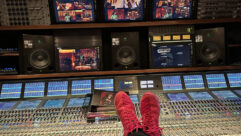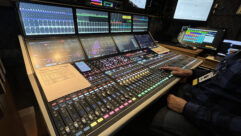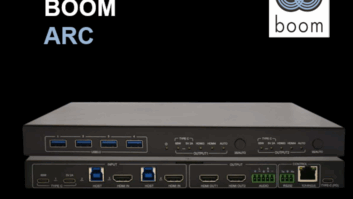Surely one of the most peculiar losses of COVID is Orlando’s Holy Land Experience. You may not know this, but it shares a parking lot with Electrosonic’s Orlando office, and in my years of association with ES it was always on my list to go. I had been intrigued by the stories of Jesus arriving on his Harley to do his daily reenactment of the Crucifixion. Rumor had it that the Apostles liked to take their smoke breaks in the parking lot. This added to the mystique, especially for me as a former designer of museums and themed experiences. Cast members—whether Disney or the Holy Land—have stories to tell, and not just on stage.
I remember when the park opened in February 2001, the life dream of a Russian Jew Marvin Rosenthal. One of the more famous components of the Holy Land Experience, the Scriptorium museum, opened in 2002. It featured one of the world’s larges collections of biblically-related artifacts, with the intention of making them available to research, scholars, and the general public. I wanted to see that almost as much as the biker Jesus.
In June 2007, the Holy Land Experience Board of Directors sold the property to the Trinity Broadcasting Network (TBN), for an estimated $37 million. TBN said planned to update the park and use the property to build a Central Florida broadcasting facility, and a Christian movie studio. The Holy Land experience remained a non-profit.
Under TBN’s ownership, The Holy Land Experience got new construction, new landscaping, exhibits, restaurants, and theaters for those live musical and theatrical productions. The park also introduced weekly bible studies, church services, and live cooking demonstrations. The Smile of a Child Adventure Land was added with its rock-climbing wall, toy store, children’s theater, and craft center. In 2015, the park opened the Trin-i-Tee mini golf course.
Just before COVID, in February 2020, the park responded to what had already been a sharp (and mystifying if you ask me) decline in revenue and decided to end all theatrical, restaurant, and retail activities and serve on as a museum. It opened to the public for just one day in April of 2021 in keeping with a 2005 ruling that secured its non-profit status and forgave all back taxes as well as $300,000 in property taxes. On August 2, 2021, in an ironic–even biblical–sign of the times, the property was sold to AdventHealth for a new health care center.
The moral of the story is: If there is a landmark or show or concert you’ve been meaning to see for a long time, and Covid restrictions will allow, do not delay. I learned this from my teenager. When Notre Dame burned, she remarked that she was so happy she’d seen it. She had a running list of everything she wanted to see before it might be gone. At the top of her list was Italy, so we planned that for her 2020 graduation trip. When we unexpectedly got a chance to go in summer of 2019, we went for it. The luck of the Scottish was with her again. But it’s not luck, it’s initiative and I just didn’t try hard enough to see The Holy Land Experience. Note to self.










